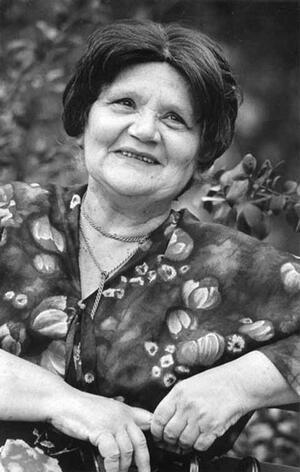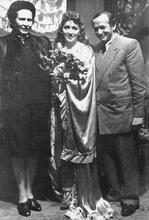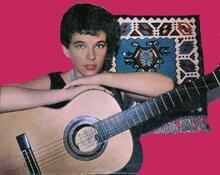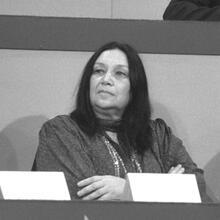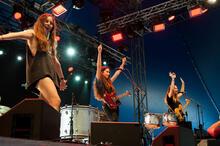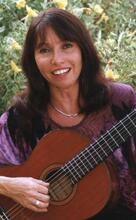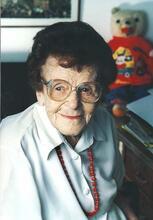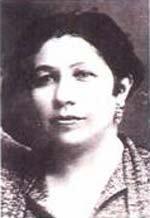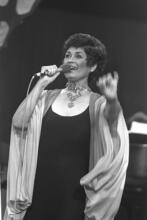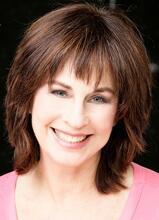Hebrew Song, 1880-2020
Hebrew song as a whole, including songs of Erez Israel and the State of Israel, is a unique socio-cultural phenomenon that has developed over time. The field of Hebrew song includes both songwriting and performance. The dawning of Hebrew song can be traced to the period between 1880 and 1903, when Jewish poets in Europe began to write poetry in Hebrew. Following this, from 1904 to 1923 the repertoire of shirei Erez Israel began to develop. Both children's songs and Yishuv songs grew in this period. The years between 1924 abd 1948 brought the “Erez Israel composers,” known as the founders of Hebrew song, and in the 1950s through the 1970s, the genre grew greatly and reflected all the diverse aspects of Israeli society. The contribution of women to Hebrew songs, in general, has risen steadily over the years.
Overview
“Hebrew song” is a general term for the field of music that combines Hebrew text with music; in other words, a lyric that is sung in the Hebrew language. (This classification does not include liturgical and paraliturgical song, although the latter is also sung in Hebrew.) The term “Hebrew song” generally encompasses both shirei Erez Israel (songs of the Land of Israel) and “Israeli song,” both of which consist of Hebrew lyrics that are sung; however, the melodies in this case were composed in pre-State Palestine or, after 1948/9, in Israel.
Hebrew song as a whole, including songs of Erez Israel and the State of Israel, is a unique sociocultural phenomenon resulting from a combination of several factors. It came into being over the course of a relatively short period—some 140 years—in an emerging society that was striving mainly for homogeneity. This process was an overt—at times, even deliberate—response to an explicit ideology of creating a new culture that would arise on the foundations of the old.
The field of Hebrew song includes both songwriting and performance. The former involves the composition of lyrics and/or melodies, and the latter, singing and/or playing an instrument.
The present article surveys the development of Hebrew song in general, and songs of Erez Israel and Israel in particular, over the course of six separate periods, with special emphasis on the role of women in the areas of songwriting and performance.
Early Period: 1880–1903
The dawning of Hebrew song can be traced to the revival of the Hebrew language, even before the waves of Zionist immigration to pre-State Palestine, when Jewish poets in Europe began to write poetry in Hebrew, expressing a yearning for the Land of Israel coupled with the hope and desire to renew the nation in its historic homeland. This genre is also referred to as the “poetry of Hibbat Zion” (Love of Zion).
These and similar themes represented a distillation of the Zionist ideas that were beginning to gain a following in the Jewish world at the time; they later became a poetic expression of the ideas of the Zionist movement. Like any national liberation movement, Zionism needed songs to be sung by its members at Zionist gatherings. The lyrics of these early songs were these same works of Hebrew poetry “married” to melodies borrowed from well-known songs (a practice known as contrafactum). The melodies were drawn from A member of the hasidic movement, founded in the first half of the 18th century by Israel ben Eliezer Ba'al Shem Tov.hasidic songs, songs in Yiddish (including some from the plays of Abraham Goldfaden), and the repertoire of folksongs from Romania, Poland, Russia, and the other lands from which Jews were then immigrating to the Land of Israel. This group of songs, some of which were brought to pre-State Palestine by members of the First Aliyah (1882–1903), are known as the “songs of Hibbat Zion,” and they were the first songs in the Hebrew language.
From a musical perspective, these were melodies written in minor keys, in duple meter, at times in the rhythm of a marche (in most cases, a slow marche), in strophic form. The stress was on the penultimate syllable of the Hebrew words.
Among the writers of these works were poets Naphtali Herz Imber (1856–1909), Menachem Mendel Dolitsky (1856–1931), Mordechai Zvi Mane (1859–1886), Constantine Aba Shapira (1839–1900), and E. Zunzer, and educators Aaron Loboshitsky (1874–1942) and Noah Pines (1871–1939) (who were the first to write children’s songs in Hebrew). Their ranks also included the poet Sarah Shapira, whose poem “Al Tal ve-Al Matar” (On Dew and on Rain) was also “married” with an existing tune and sung in various Jewish communities at the time. Hebrew songs were also composed in pre-State Palestine during the years of the First Aliyah, but no lyrics and/or melodies written by women of the period have yet been found.
Second Period: 1904–1923
The second period of Hebrew song included the Second and Third Lit. "ascent." A "calling up" to the Torah during its reading in the synagogue.Aliyah, 1904–1914 and 1919–1923 respectively, and the years in between. During this period, changes took place in Hebrew song, with the repertoire of shirei Erez Israel beginning to develop. As Hebrew educational institutions were set up in the cities and moshavot (collective settlements) and music classes began to be included in school curricula, it became clear that there existed almost no musical material geared to children, and that there were virtually no songs that could be sung in kindergartens and schools. The songs used in schools were mainly “parable songs” imported from abroad, but most of these were not suitable for children’s songs in pre-State Palestine both because of the language and because of the typically foreign images. This led some of the singing teachers to compose a wide range of musical material, mostly songs. Noteworthy among the teacher/composers were Hanina Karchevsky (1873–1926) and Abraham Zvi Idelsohn (1882–1938), who began their work during the first decade of the twentieth century and were among the earliest composers in pre-State Palestine. Others were Levin Kipnis (1894–1990), who immigrated to Palestine in 1913, and Yisrael Dushman (1884–1947), who wrote the lyrics to such songs as “Shir ha-Ma’apilim” (Song of the Illegal Immigrants), which opens with the line: “El rosh ha-har” (“To the mountaintop”); “Po be-ErezHemdat Avot” (Here in the Beloved Land); “Hanukkiyah, Hanukkiyah” (Hanukkah Menorah); “Ha-Halutzim be-Yad Haruzim” (Hard-Working Pioneers); “Had Gadya” (One Kid); and others.
Both Kipnis and Idelsohn kept in close contact with teachers of kindergarten children, who were the first target audience for the children’s songs they composed (lyrics by Kipnis, music by Idelsohn). Idelsohn also taught at a kindergarten teachers’ training college in Jerusalem and published articles on the topics of music and songs for kindergarten teachers. According to these teachers’ memoirs, they were the ones who tried out the new songs in the field, passing the successful ones on to their pupils, thus serving as the connecting link in publicizing these songs. (It is noteworthy that even today, 100 years after they were composed, some of these songs are still being sung.)
The close ties between the composers and kindergarten teachers were reinforced with the publication by Kipnis of Gilyonot la-Gananot (Booklets for Kindergarten Teachers). Some seventy issues were published, the first of which were duplicated by hectograph from 1919 to 1921. Kipnis later edited Gilyonot, the bulletin of the Kindergarten Teachers Union (1921–1922).
During World War I, the Yishuv (pre-State Jewish community in Palestine) was cut off from all other Jewish centers, forcing it to become self-sufficient from a cultural standpoint as well. As a result of this isolation, which lasted roughly three years, the gap widened between the repertoire of Hebrew songs in Palestine and that of Europe. During this period, creative activity was carried out by various kindergarten teachers on a sporadic basis. Unfortunately, nothing remains in writing of the songs composed by the kindergarten teachers during this period.
In addition to children’s songs, other genres whose influence is felt to this day were gaining popularity in the emerging Yishuv community. These included songs in which Hebrew lyrics were adapted to the Eastern melodies that were popular at the time. Songs such as “Hakhnisini Tahat Kenafeikh” (Take Me Under Your Wing), “Yad Anugah” (Gentle Hand), “Bein Nahar Prat” (Between the Euphrates and the Tigris), and “Ani Re’itiha” (I Saw Her) exemplify the uniqueness of this genre. Some of these “adaptations” were composed by women students at educational institutions in Jerusalem.
Another category consisted of songs whose melodies originated in the hassidic courts of eastern Europe and whose lyrics were short biblical verses or prayers, sometimes paraphrased (as opposed to the many lines and lengthy lyrics of the previous period). Songs such as “El Yivneh Ha-Mikdash” (God will Build the Temple), “Ve-Taher Libeinu” (Purify Our Hearts), “El Yivneh Ha-Galil” (God will Build the Galilee), and “Zivhu Zedek” (Offer Sacrifices of Righteousness”) are typical of this group. Songs of this type were the principal musical source for the hora and rondo dances of the Second Aliyah. The group sing-alongs and hora dancing that characterized Yishuv society were beginning to emerge during this period, of which the Third Aliyah was a direct continuation. From memoirs of this period, we are aware of the role played by women in the communes of the Second Aliyah, including the area of musical performance (see memoirs of Nechama Zitzer, Yael Gordon, Meri Yatziv, Ada Fishman Maimon, and numerous others).
Third Period: 1924–1948/9
The year 1924 is considered by scholars of Hebrew culture to be the point at which the cultural center of the Jewish people shifted to pre-State Palestine. This period, which ended in 1948/9 with the founding of the State of Israel, is regarded as the golden age of shirei Erez Israel. The late 1920s were a milestone and a turning point in the history of this genre. These were the years when there was a generational “changing of the guard” among the songwriters in Palestine. As composers such as Hanina Karchevsky, Abraham Zvi Idelsohn, and Yoel Angel (1868–1927, who worked in Palestine only during the last three years of his life) were ending their careers, others were just starting to compose, including Yedidyah Admon (1894–1985), Menashe Ravina (1888–1968), Shalom Postolsky (1893-1949), Nahum Nardi (1901–1977), David Zahavi (1910–1977), Yehuda Sharett (1901–1979), Mordechai Zeira (1905–1968), Matityahu Shalem (1904–1975), Binyamin Omer-Hatuli (1902–1976), Emanuel Amiran (1909–1993), Sarah Levi-Tanai, and many others. These are also known as the “Erez Israel composers,” and some even refer to them as the founders of Hebrew song. During this period and the years that followed, songs were composed and sung in Palestine on the themes of labor and the homeland, the landscape of the Galilee and the Jezreel Valley, and construction and creation, in addition to children’s songs and holiday songs. The poets of the time, both male and female, frequently wrote in the first person (“we,” “I”); also very common were words and phrases such as “all of us,” “together,” “we shall toil/build/establish/dry out [the swamps]/conquer,” and the like—a collective national “I” of sorts. During the 1930s, additional composers arrived in Palestine, among them Moshe Wilensky (1910–1997), Daniel Sambursky (1909–1977), Marc Lavry (1903–1967), and others who made significant contributions to the genre of shirei Erez Israel.
Most of the works later included in the repertoire of Hebrew song were composed in pre-State Palestine by songwriters who were identified by name. Many composers saw themselves as builders of the emergent Hebrew culture and viewed their songs as “folksongs” of this culture, with all that that implied. Paradoxically enough, they even sought to determine the place of these songs in the nascent culture, despite the fact that one of the defining features of “folk art” is the anonymity of the composers. This approach may have been the source of several basic qualities of shirei Erez Israel: The songs are suited for community sing-alongs, dictating the need for a simple textual and musical structure, uncomplicated melodies, uniformity of subject matter, and ease of performance (chiefly monophonic and unison singing), thereby enabling diverse audiences of varying ages to sing them. Indeed, this is one of the prominent features of Hebrew song: The songs are intended for everyone to sing along. In the search for “ancient” Israeli musical roots, the Dorian mode was found to be the closest to the presumed style of Hebrew song—which would explain its popularity in shirei Erez Israel. The Eastern-Yemenite trill is also present in many melodies.
In addition to Sarah Levi-Tanai, who in 1927 began writing songs (lyrics and music), some of which are still sung today, other female composers included Theresa Goitein (1899–1977; immigrated to pre-State Palestine in 1927), Orna Bial, Rivka Gavili (1910-1999), Kata Jacob, Friedel Nussbaum, Miriam Weitzman, Vardina Shlonsky (b. 1913), and Nira Chen (b. 1924), among others. Most of the women composers wrote melodies for children’s songs. Nira Chen became famous toward the end of this period as a writer of songs for folk dances.
Songs written by women lyricists also began to gain in popularity. The first woman lyricist, many of whose songs were set to music during this and later periods, was Rahel Bluwstein, better known as Rahel. Other women poets whose lyrics were put to music and sung during these years included: Fania Bergstein (1908–1950), Lea Goldberg, Hannah Szenes, Miriam Stekelis, Anda Amir, and Elisheva Bichovsky. In addition some twenty other women wrote lyrics for children’s songs, among them: Penina Halprin (b. 1887), Rivka Davidit, Rivka Weisman-Dizengoff, Sarah Gluzman (b. 1915), Hedva Smoiler, Shulamit Klugai (1891–1972), Yaffa Krinkin, Miriam Shirshtik-Wolman, and others.
During this period, women who also gained fame as performers of music included Osnat Halevi, Brachah Zefira, Shoshana Damari, Yosefa Schocken, and Naomi Zuri, to name a few. Among the actresses from repertory theater (and not only from satirical revues) who became known for their dramatic singing performances were Hanna Rovina, Lea Deganit, Jenny Lovitz, Nyora Schein, and others. Many of the village songs, shepherds’ songs, ceremonial songs, and festival songs, as well as countless children’s songs, were written in the 1930s and 1940s. In some of these works, one can discern Sephardic influences that made their way into shirei Erez Israel, whether through composers of Mizrahi extraction (such as Sarah Levi, Nissan Cohen-Melamed [1906–1980] and others) or via the impact of the surrounding community on such composers as Yedidyah Admon, Nahum Nardi, David Zahavi and Emanuel Amiran.
Featuring prominently in many of these lyrics were images of flute-playing shepherds with their flocks, songs of construction and cement, taming the desert, conquering the land, and settlement events, and songs of aliyah and struggle. While the first-person plural and collective verbs were commonplace, a sizeable proportion of the song lyrics written by women can actually be characterized as songs of the individual.
Political events, both domestic and foreign, led to greater variety and even to changes in the songs of Erez Israel during the 1930s, but primarily in the 1940s. The Jewish-Arab conflict increased the importance of themes of defense and heroism, as reflected in songs about the Ha-Shomer group and shirei magen (songs of self-defense). Efforts to create a “village culture” raised the status of the songwriters of the pioneer settlement movement, in particular the composers of the kibbutz movement (D. Zahavi, M. Shalem, Yehuda Sharett, Shalom Postolsky [1893–1949], and others).
A noticeable contribution to this culture was made by women who engaged in creating expressive dances that depicted “village life.” Each of these women choreographers—such as Sara Levi, Gurit Kadman, and Rebeka Shturman—worked together with male and female composers. Thus their indirect influence on Hebrew song during this period was quite significant.
The War of Independence and the establishment of the State of Israel bring the “Erez Israel” period to a close, marking the beginning of the period of Israeli song.
Fourth Period: 1950–1977
At the onset of the fourth period, Israeli song appeared to be a direct continuation of its predecessor—the same songwriters, the same performers, and the same singing groups as closed the third period. But a varied mixture of styles and genres soon began to emerge.
By the early 1950s, almost every household in Israel owned a radio. Over the course of the decade, three new radio stations were added, which broadcast Hebrew songs for a growing number of hours each day. Towards the end of the 1950s, the transistor radio was already making its appearance on the city streets and village pathways. Records were also becoming a sought-after item. Male and female singers, singing groups, duos, and other musical ensembles recorded numerous Israeli songs, most of them new. Popular songs from Europe and the United States were also making an impact via radio and records.
The airing of a song on radio or before an audience, and its availability on record, created a new phenomenon in Hebrew song: identification of a particular song with its performer. Whereas in the previous period, the names of performers with a unique style could be counted on the fingers of one hand (the women—Zefira, Damari, Yarkoni—being the best known), their numbers grew during this period to several dozen singers.
One of the first musical styles to emerge during the 1950s was the “village song” and the shepherd, or pastoral, song. This style, which marked a continuation of sorts of the “village culture” of the 1940s, received the official support of the Establishment in addition to retaining its popularity among the masses (for example, the winning songs in Kol Yisrael radio’s Song Festivals of 1960–1967). The lyrics portrayed pastoral scenes and the rustic way of life of the shepherd in flowery language punctuated with cries of “ho ho” and “hey hey.” The melodies, which had a simple structure, were written in minor and modal keys. The instruments that predominated were the acoustic guitar, which often dictated the level of harmonic accompaniment, together with the accordion and the darabukka (Arab goblet-shaped drum) and tambourine.
Alongside this style, there developed a special dance form referred to at the time as “folk dances.” Song and dance together produced an impressive crop of new songs. Some even had an Eastern flavor that later came to be known as “Mizrahi-Mediterranean.” These songs still featured images of shepherds with a flute, folk dances, songs of construction, taming the desert, and conquering the land, campfire songs, songs of victory, and dance songs. In many of the lyrics, the speakers continued to express themselves in the first-person plural and to use the same collective verbs cited earlier. Among the songwriters who often composed in this style were Emanuel Zamir (1925–1962), Gil Aldema (b. 1928), Dubi Seltzer (b. 1932), Amitai Ne’eman (1926–2005), Effi Netzer (b. 1934), Aryeh Levanon (b. 1932), Yosef Hadar (b. 1926), Nachum Hayman (1934-2016), and others, most of them accordion players. They represent the first generation of Israeli composers, who were born in the Land of Israel, and began to write with the founding of the state.
Two new audiences that began to coalesce during this period were “adopted” by the Histadrut (Israel’s General Federation of Labor): (a) folk dancers, for whom a special section was established which, together with the Histadrut’s music section, produced and distributed song sheets of dozens of songs (words and musical notes), at times together with precise dance instructions; and (b) new olim (immigrants) in the transit camps and development towns, for whom the music section produced special songbooks, sometimes in conjunction with other key bodies such as the Information Administration, the local (regional) authorities, and the like. The Histadrut’s music section also extended its domain to include all participants in choirs and, later, members of singing groups (which flourished in the 1980s) in the cities, the Lit. "village." The dominant pioneer settlement type of the Jews in Palestine between 1882moshavot and the kibbutz movement. It accomplished this by providing high-quality musical and instructional material (for which it was the exclusive source) and by organizing gatherings of choirs, assorted musical encounters, and continuing-education programs for youth-group leaders and choir directors.
Alongside the village and shepherd’s songs, the “salon” style was now beginning to develop. The name had originated during the previous period, when the couples dances that were popular at the time (the tango, waltz, rumba, slow dances, and the like) became known as “salon dances” and the songs that accompanied them “salon songs.” The style, which had already sprouted in the 1940s with dance orchestras in cafés, nightclubs, and bars in the big cities, was boosted by such satirical revues as Ha-Matate and Li-La-Lo, which adopted the various salon rhythms. It soon became widespread, captivating increasing numbers of young people and adults and gaining popularity as a result of the international hit parades broadcast over the radio (including Radio Ramallah and Abie Nathan’s Kol Hashlom). An additional boost came from the record stores that were opening, where one could buy both imported and local records
From a musical standpoint, the salon style was noteworthy for its rhythms, which were considered foreign and unsuited to the Erez Israel style. In terms of harmony, one could discern harmonies drawn from jazz, which was starting to win admirers among the Israeli audience. The bulk of the salon songs in the early 1950s dealt with romance. In this respect, they presaged the individualistic “I” lyrics that swept Hebrew song during the following period.
Among the many songwriters who joined the list of contemporary creators of Hebrew song were a number of women, including Daniela Dor (1908–1963),
Dafna Eilat (1938–2002), Lea Naor (b. 1935), and Drora Havkin (1934–1995), who collected and conserved "street songs" and developed this genre. The most important songwriters of this period were Naomi Shemer and Nurit Hirsch.
But the role of women during this period was largely in the area of musical performance. The phenomenon of male-female singing duos, which originated during these years, was exemplified by "Ilka and Aviva," "Ran and Na'ama" (Na'ama being Nechama Hendel), "Shmuel (Bar-Zakai) and Tova (Ben-Zvi), and the "Ha-Ofarim," and later by "Ilan and Ilanit," "Hedva and David," and others. (In some cases, the professional collaboration turned into a marital bond.) Among the trios of this period were the trio of girls "Shokolad Menta Mastik" (chocolate, mint, and chewing gum), and "Bnot Hava" (Daughters of Eve). The vocal ensemble of two men and a woman was a popular format, for example “Shlishiyat ha-Ma’apil,” with Irit Sendner and “Ha-Chalonot ha-Gevohim” (the high windows), and "Hatov Hara Ve-Hana'ara" ("the good, the bad and the girl), in both of which Josie Katz participated. Other women singers of note include Ahuva Tzadok (b. 1928), Jetta Luca (b. 1925), Hana Aharoni (b. 1933), Shulamit Livnat (b. 1931), Aliza Kashi (b. 1936), Ilana Rovina (b. 1934), Hadassah Sigalov, Geula Gil (b. 1932), Rika Zarai (b. 1936), Lilit Nagar (b. 1936), Aliza Azikri (b. 1941), Yona Atari (b. 1933), Rahel Atas (1934–2004), Aliza Gabai (b. 1936), Rivka Raz (b. 1936), Rivka Michaeli (b. 1938), Edna Goren (b. 1943), and, later in the period, Chava Alberstein (b.1946), Gila Adari (b. 1950), and others. Many of these women began their careers in military bands.
In 1951, the first military band, the "Nahal Band," was established, in order to perform on military bases and to entertain the soldiers by presenting songs and sketches. The success of this ensemble soon led to the establishment of similar ensembles in the military; for 25 years, the military bands have been performing with songs and skits for the entire Israeli society. Moreover, these bands provided a habitat for singers, songwriters, musicians, choreographers, lighting crew, soundmen, and more, who became and remain the backbone of Hebrew song.
Among the composers who frequently wrote for the army entertainment troupes were Sasha (Alexander) Argov (1914–1996) and Moshe Wilensky, who were the connecting link between the generation of “Erez Israel” composers and Israeli composers. Others included Dubi Seltzer (b. 1932), Yohanan Zarai (1929-2016), Naomi Shemer (1930-2004), Drora Havkin (1934-1995), Aryeh Levanon (B. 1932), and later Nurit Hirsch (B.1942), Yair Rosenblum (1944–1996), Matti Caspi (b. 1949), Benny Nagari (B. 1950), Eldad Shrim (B. 1950), Kobi Oshrat (b. 1944), and others.
One of the results of the "Six Day War" in 1967 was the opening of the first television channel of the national broadcasting authority. From one channel broadcasting in black and white, three days a week for three hours a day, Israeli broadcasting developed to multiple channels operating seven days a week, presenting a variety of programs for different ages and sectors. Music in general and Israeli music in particular had favored places within Israeli television broadcasting. Television also enabled Israelis to watch foreign music festivals, such as at the Sanremo music festivals and the Eurovision song contest, as well as international singers and bands.
In the mid–1960s, a number of changes took place in the various Israeli singing groups (in particular the army entertainment troupes) and in many of the back-up groups that provided musical accompaniment: the accordion was replaced by the electric-organ (and later, the synthesizer); the Darabukka was replaced by a full set of drums with accessories/additional percussion instruments; and electric and bass guitars were introduced. This shift made it legitimate for other groups to change their musical style to the young, modern sound that was then fashionable in the West, in which rhythm became more dominant.
Israeli Song has absorbed influences from both within and without. Domestically, it has drawn mainly on the musical sources of the various ethnic groups in Israel; the foreign influences have stemmed largely from the musical styles of Europe and the United States, stretching from folk music to pop and rock music styles, including Elvis Presley and the Beatles.
Throughout this period, Hebrew song shifted from one style and inspiration to another, as if searching for an identity; but in fact it was enriching itself for the future. This was a time when dozens of performers, both male and female, each attempted singly and in duos, trios, and entire troupes, to find their own unique style.
The period's end was marked by the significant political upheaval that led the rightwing party "Likud" to power, largely relaying on voters of Lit. "Eastern." Jew from Arab or Muslim country.Mizrahi and North African descent. The influences of this political shift are evident in almost every aspect of Israeli society and culture and shed light on Mizrahi Jewish cultures and traditions.
Fifth Period: 1978–2000
At the beginning of this period, television became the Israeli public's main source of information and entertainment. Television broadcasting in Israel brought a new dimension to Israeli song. The difference expressed itself, among other things, in the methods of distribution, the greater exposure of songwriters and performers, and influences from other cultures, initially those of Europe and the United States, and later, the world at large.
The televised concerts and appearances by singers and pop and rock groups, all of them taking place as if in one’s own living room, enabled hundreds of Israeli songwriters and performers to reach a virtually worldwide audience. In addition, the ability to film and to record simultaneously and separately opened up new opportunities for performers of Hebrew song. Television also made the performers' appearance as crucial as their musical performances.
The ability to reach hundreds of thousands of viewers and listeners—and sometimes more—at one time, changed all existing criteria with respect to style, format of the group, choice of songs, adaptation of the repertoire to the maximum number of consumers (i.e., the pursuit of ratings), innovation, creativity and so forth.
Following the political upheaval in 1977, in which the Likud party defeated the Labor party for the first time in elections to the Ninth Knesset, and the closure of the military bands, the genre of "Songs of the Old Land of Israel" began to decline and two new styles began to occupy the center stage: The Eastern-Mediterranean music, and pop and rock style with its various branches, influenced by the popular culture of the western world.
The ethnic influence in Israeli song already existed before the founding of the state. During the first and second periods cited above, there was a tendency of sorts toward cultural integration in the regional space. In the third period, the inclination was to connect the ancient past with the new “Israeliness” in its authentic Mizrahi form. During the fourth period, the Mizrahi/Oriental was seen largely as the Arab enemy of Israel. Following the Yom Kippur War (1973), and especially after the “upheaval” of 1977 that altered the political map of Israel, ethnic awareness intensified, Descendants of the Jews who lived in Spain and Portugal before the explusion of 1492; primarily Jews of N. Africa, Italy, the Middle East and the Balkans.Sephardi performers of Israeli songs gained greater importance, and air time began to be allocated differently.
In less than two decades, aided by political activism, the Mizrahi-Mediterranean style became one of the major genres of Israeli song. Among its basic elements are frequent melismatic passages, heavy use of the augmented second, melodic ornamentations and embellishments within the quarter tone and semitone, and instrumental accompaniment generally using electronic instruments (synthesizers) together with electric guitar, bass guitar, and percussion instruments. In addition, one or more of the following Mizrahi instruments are frequently featured: the violin, oud, kanoun, darabukka and—owing to the Greek influence—the bouzouki and mandolins. Among the outstanding women performing in this style are Ahuva Ozeri (b. 1949), Margalit Tsanani (b. 1949), Aviva Avidan (b. 1951), Zahava Ben (b. 1968), and Sarit Hadad (b. 1978).
The preeminent women of this period are undoubtedly Naomi Shemer and Nurit Hirsch in the area of songwriting, and Chava Alberstein, who joined the ranks during the 1980s, as a performer. All three began their careers during the fourth period but reached their pinnacle in the fifth.
Women who gained famed as writers of lyrics include the poets Tirza Atar (1941-1977) and Yona Wallach (1944-1985) and the lyricists Lea Naor (b. 1936), Hamutal Bar Yosef, (b. 1940) Mirit Shem-Or (b. 1945), Rachel Shapira, (b. 1945), Chana Goldberg (b. 1945), Vered Klapter (b. 1957), Talma Alyagon-Roz (b. 1945) and others. (The poets wrote their words with no connection to their eventual melodies, whereas the lyricists did so in collaboration with a composer.)
A specialized area of songwriting that developed during this period is that of songs for children. Hundreds, if not thousands, of children’s songs were written during the years in question. This field belongs almost exclusively to women. Among the more prominent creators of children’s songs, suffice it to mention the songwriters (words and music) Datia Ben Dor (b. 1944), Ariela Savir (b. 1961), and Meirav Hausman.
During this period, a new type of artists began to make their presence felt: the singer-songwriters, who both compose songs and perform them. Most of the singer-songwriters express themselves in a highly personal way. The outstanding female practitioners of this type of Israeli songwriting include Corinne Allal (b. 1955), Si Heiman (b. 1961), Alona Daniel (b. 1965), Astar Shamir (b. 1955), Lea Shabbat (b. 1957), Inbal Perlmutter (1971–1997), Mika Karni (b. 1972), and others
During the years in question, there was a decline in vocal ensembles (duos, trios, foursomes, and groups); nevertheless, some of the more outstanding ones had women members who played a major role, among them the Datzim, better known as Datz and Datza; Shuki and Dorit (1978–1990); the Neshamot Tehorot trio, with Nava Baruchin; the Hakol Over Habibi foursome, with Shlomit Aharon; and Ha-Ahim ve-ha-Ahayot (1971). Also gaining fame were groups made up solely of women, such as Susan and Fran (1972); the Shokolad Menta Mastik trio (1972–1978); Sexta (1978–1983); Ha-Makhshefot (1992–1997) and others.
During this period, a new performing art was added to the realm of Hebrew song, namely, leading community sing-alongs.
Two unique phenomena flourished: "singing clubs" and "singing groups." A "Singing Club" holds evenings of "public singing" in a public hall; several hundred participants, men and women, sing together Hebrew songs, whose lyrics are projected on a screen in front of the audience. The singing is "led" by a "public singing facilitator" who accompanies him/herself by an accordion or a guitar and may be assisted by additional leaders. A "singing group" (such as "the Givatron") is a small group of singers, accompanied by an instrumental accompaniment, performing Hebrew songs that are adapted under the direction of a professional musician who leads the group. In 1998, about 800 such choirs operated throughout the country. Among the public singing instructors, it is enough to mention Sarah'Le Sharon (b. 1949), who earned the nickname "Queen of Hebrew Singing."
Also during this period, a number of women stood out as performers of assorted styles of Hebrew song. Not all made their mark in the same way and at the same level, but each reached the top of the hit parade at least once. Some of the women were awarded prizes and titles such as “female singer of the year,” “discovery of the year,” and the like. The following list is arranged by year of birth, not according to the order in which the singers became famous: Michal Tal (b. 1945), Tsila Dagan (b. 1946), Ilanit (b. 1947), Shula Chen (b. 1947), Shuly Nathan, Rivka Zohar (b. 1948), Nira Gal (b. 1948), Miri Aloni (b. 1949), Riki Gal (b. 1950), Ophira Gluska (b. 1950), Edna Lev (b. 1950), Nurit Galron (b. 1951), Dorit Reuveni (b. 1952), Netanela (b. 1954), Ruti Navon (b. 1954), Sheri (b. 1955), Ruhama Raz (b. 1955), Gali Atari (b. 1956), Yehudit Ravitz (b. 1956), Dafna Armoni (b. 1957), Mazi Cohen (b. 1959), Ilana Avital (b. 1960), Rita (b. 1962), Etti Ankri (b. 1963), Meital Trabelsi (b. 1972), and others.
Sixth Period: 2000-2020
The sixth period can be defined as the "sunset" period for some of the characteristics of Hebrew song. While in earlier periods the military bands (disbanded in 1977) formed a kind of "arsenal" of performers and musicians (composers, processors, music instructors, etc.), during this period this type of composer and performer was devalued. Singing clubs of all kinds, which operated in all parts of the country, dwindled, and only a few remained. The number of "singing groups" decreased by more than 55%. The style of "Eretz Israel Hayeshana" (Songs of the Old Land of Israel) has almost completely disappeared. With a very few exceptions, it is impossible to mark a unique creator or performer who has left a mark. The following list consists of female singers of this period, some of whom "shone" during this time, and others who appeared as a one-time "flicker" : Dana Berger (b. 1970), Miri Masika (b. 1978). Rona Kenan (b. 1979), Maya Buskila (b. 1979), Keren Peles (b. 1979), Shiri Maymon (b. 1981), Ninet Tayeb (b. 1983) Nasrin Kadri (b. 1986), Eden Ben Zaken (b. 1994), Noa Kirel (b. 2001) and Netta Barzelay (b. 1993), who became famous when she won the Eurovision Song Contest 2018 for the song TOY.
2020 will be remembered in Israel's and the world's history as the "Coronavirus Year." This year might mark a significant shift in the "Hebrew Song," due to the limitations the plague set on the public, causing the cancellation of public events and performances. The long-term consequences remain to be seen.
Hebrew Song Outside Israel
Israeli songs and shirei Erez Israel are sung throughout the world, but primarily in Jewish communities. Israeli songs are often a symbol of identification with the Jewish world and the State of Israel. The instituting of television broadcasts during the fifth period helped popularize Israeli song in other cultures as well. From time to time, Israeli performers have taken first place at international song festivals, with women predominating in this group: The songs “Stav” (Autumn; performed by Esther Ofarim) and “Laylah ve-Ashan” (Night and Smoke; performed by Rivka Raz), both composed by Moshe Wilensky, won prizes at the Sopot song festival in Poland in 1962 and 1963, respectively. The Hedva and David duo was awarded first prize at a song competition in Japan with their song “Ani Holem al Naomi” (I Dream of Naomi). Since Israel began participating in the Eurovision Song Contest in 1973, it has won first prize on three occasions. The second time, the winning vocalist was Gali Atari, soloist of the Halav u-Devash group (in 1979), and the third time, the prize was won by Dana International (1998). Women singers who have competed in the Eurovision include Orna Datz of the Datzim, Ilanit, Dafna Dekel, Sara'le Sharon, and Galit Burg (of the duo Gili and Galit), Dana International, and Neta Barzilay, who both won the contest (1998, 2018). But the female singer who achieved the greatest international acclaim was Ofra Haza, performing Yemenite songs with unique musical arrangements.
Summary
From a historical perspective, it is obvious that the contribution of women to Hebrew song in general, and to shirei Erez Israel and Israeli song in particular, has risen steadily with the years. From a small group of women songwriters and performers who were active in the early periods, the number of women in the field has reached dozens in the more recent decades.
Seroussi, E., and M. Regev. Popular Music and National Culture. Berkeley, CA: University of California Press, 2004.
Shahar, Natan. Shir Shir Alle-Na [Song O Song Rise and Soar[. Modan Publishing, 2006.
Shahar, Natan. Shirat Hanoar-Ma Sharu Betnuot Hanoar-[he Song of Our Youth]. Jerusalem: Yad Iizhak Ben Zvi, 2018.

